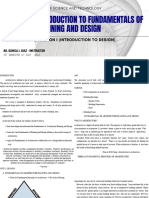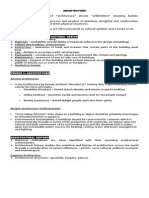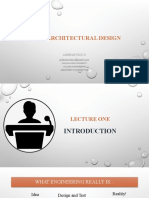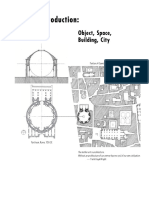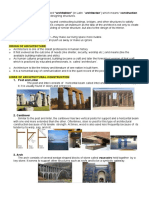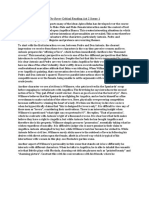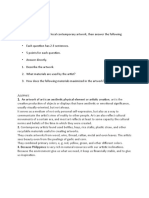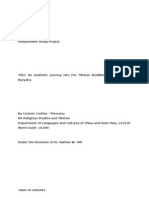0% found this document useful (0 votes)
25 views3 pagesArchitecture Class Notes
Architecture is defined as the art and science of designing buildings, focusing on key components such as form, function, structure, space, light, and material. The document outlines various historical periods and styles of architecture, from prehistoric to contemporary, and discusses architectural principles like strength, functionality, and beauty. Additionally, it details the architectural design process and mentions notable architects and careers in the field.
Uploaded by
niwipyjpwuragwqmbsCopyright
© © All Rights Reserved
We take content rights seriously. If you suspect this is your content, claim it here.
Available Formats
Download as PDF, TXT or read online on Scribd
0% found this document useful (0 votes)
25 views3 pagesArchitecture Class Notes
Architecture is defined as the art and science of designing buildings, focusing on key components such as form, function, structure, space, light, and material. The document outlines various historical periods and styles of architecture, from prehistoric to contemporary, and discusses architectural principles like strength, functionality, and beauty. Additionally, it details the architectural design process and mentions notable architects and careers in the field.
Uploaded by
niwipyjpwuragwqmbsCopyright
© © All Rights Reserved
We take content rights seriously. If you suspect this is your content, claim it here.
Available Formats
Download as PDF, TXT or read online on Scribd
/ 3






